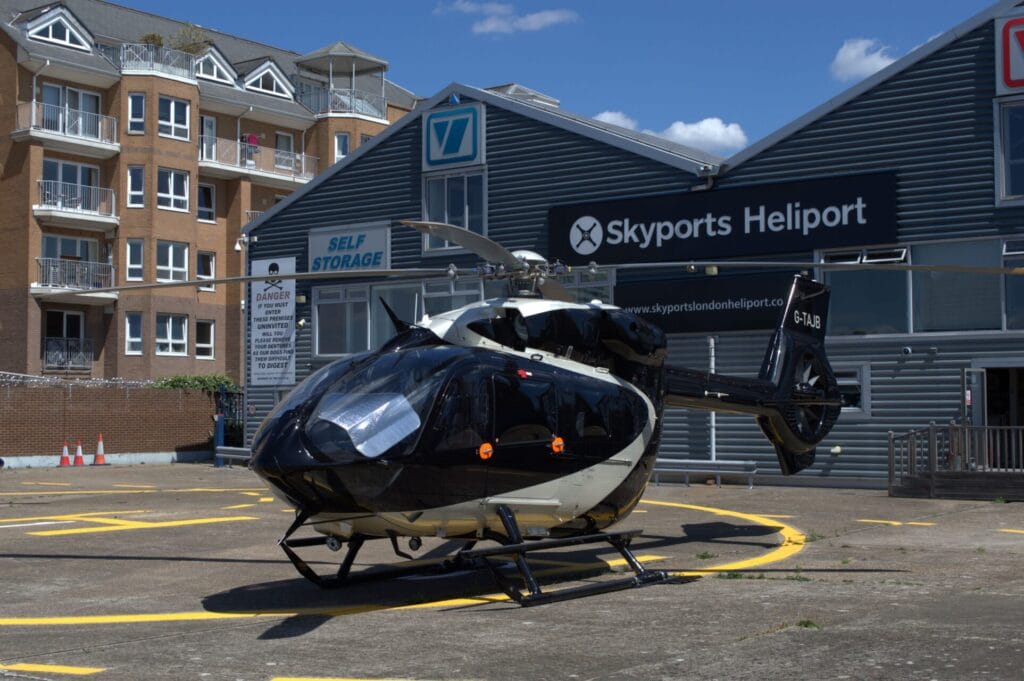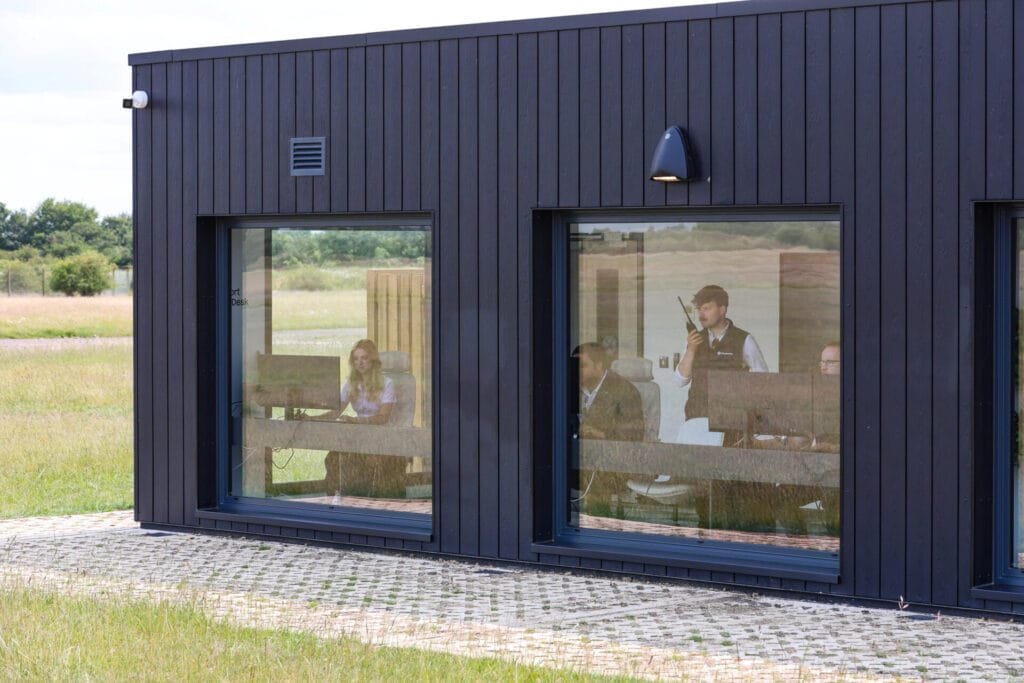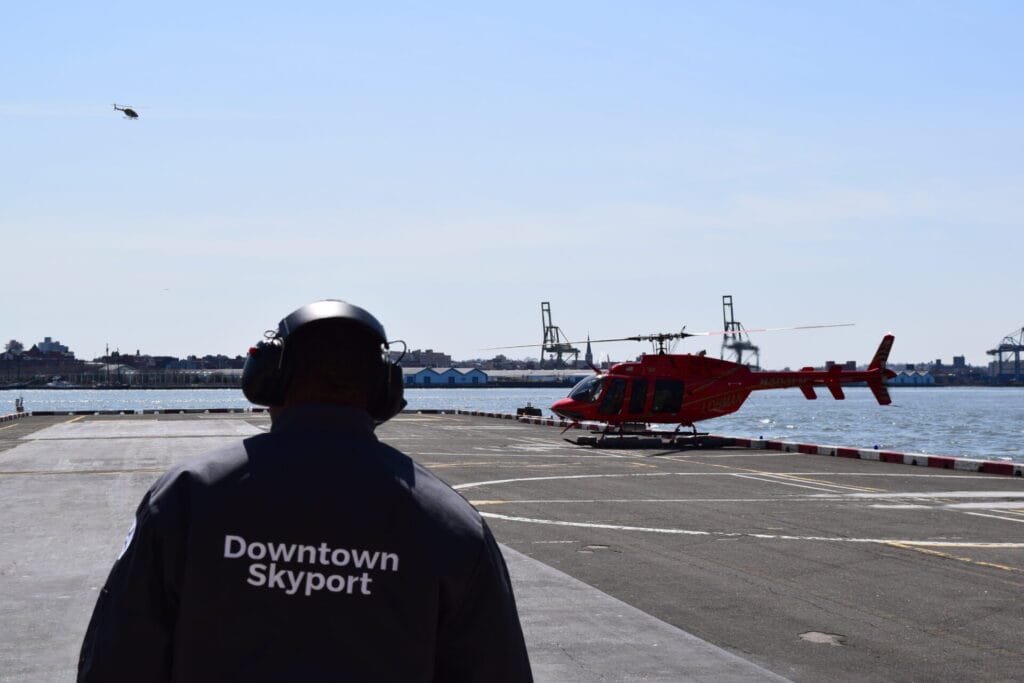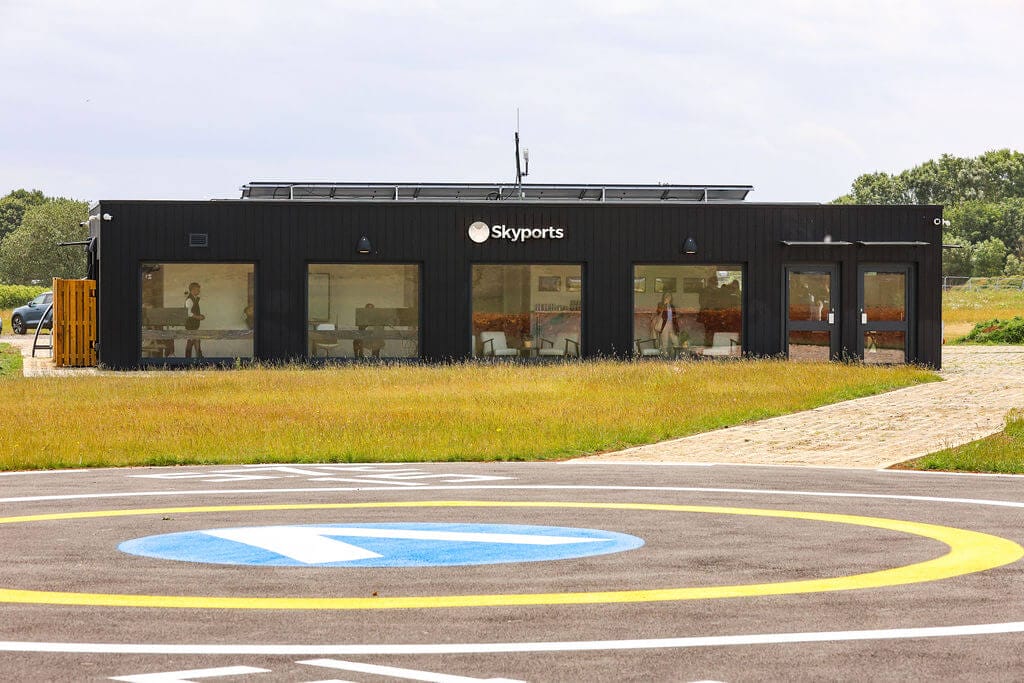At Skyports Infrastructure we’re a strong mix of “thinkers”, “planners” and “do-ers”. Here we sit down with one of our prime “do-ers”, Rob Wilson, who talks us through the ins and outs of being a Project Manager, and how he helps to turn our projects from blueprints to buildings.

Hey Rob, so you’re a Project Manager. What do you get up to day to day?
So as a Project Manager I’m the guy who helps make the big ideas happen.
When we’re mapping out projects in the early stages, I’ll sit in on the meetings, and help add input on what we can do to help make it successful, whether that’s considerations around electrification, fire and rescue services, engaging with regulators and aligning terminal design for the new eVTOL passenger journey. Basically, everything you need to make a vertiport successful.
Once we’ve broken ground, I’m then the go-between, helping to make sure the build happens as it should, troubleshooting and consulting should we come across anything unexpected.
What projects have you worked on here at Skyports?
In the early days I did a fair amount of work at our Skyports London Heliport in Canary Wharf. That involved everything from general heliport management, such as logging landings and take-offs, to helping to oversee film shoots that were happening at the facility.
I was also heavily involved in a client project in France last year, where we were implementing our resource management and scheduling system for ADP as part of the Volocopter flights during the 2024 Olympics. That came with a bit of travel, which was cool.
Beyond that I’ve also been involved in a European consortium project called OperA, where we’re providing vertiport support infrastructure to enable the development and testing of systems with Honeywell and Vertical Aerospace.

Our vertiport at Bicester has very much been your baby. Talk me through the project and what you’ve been doing there.
So the vertiport in Bicester has been my main project over the last 3 years, and was a key output of the UK’s Air Mobility Ecosystem Consortium. The vertiport’s main purpose is to be one of the UK’s first testing grounds for eVTOL flights, demonstrating the feasibility of an AAM ecosystem in the UK.
I was essentially the face of Skyports for that project, overseeing the day-to-day management and helping get the building over the line.
I love that this project has a UK focus, and it’s great to be supporting a UK OEM, Vertical Aerospace, who will be conducting test flights from the facility in the near future. They’re the last remaining major eVTOL OEM that’s operating in Europe, and we should all be doing as much as we can to support their success.

What additional challenges do you have in planning and building a vertiport over traditional aviation infrastructure?
From a practical point of view, finding locations that have access to enough power to rapid charge eVTOLs can also be a challenge. eVTOLs require around 500 KW of power to rapid charge. For context, the average UK home provides a maximum capacity of about 18KW. We’ve had locations that have looked great on paper – on an airfield, close to a decent population base and onward transport – but there simply hasn’t been the power available, and it’d be prohibitively expensive to upgrade it.
At a basic level, most people also don’t know what a vertiport is! So that always makes for an interesting initial conversation when we speak to planning officers and contractors, and it can be a challenge to translate the jargon so they understand what we’re trying to do.
From Skyports other projects, which one are you most excited by?
For me it has to be Downtown Skyport in New York City. It’s one of the world’s busiest heliports, and I think it’s a real feat that Skyports is now managing it.
We’re also really bringing that facility into the 21st century. Previously all the flight data was tracked and managed with a pen and paper, but we’re now building in our own technology and software to help automate the whole process, which will improve operational efficiency, increase revenue and reduce time spent on laborious manual tasks.
With a longer view to eVTOLs launching, it feels really special to be bringing one of the world’s key heliport facilities up to spec. We’re already looking at how we’ll integrate eVTOL chargers into the facility, with a view to having mixed helicopter and eVTOL use in the near future.

What was your personal career journey that led you to working here at Skyports?
So it’s been a bit unconventional!
I initially had dreams of being a musician (check out “Escapades” on Spotify), but the harsh realities of making it in that industry made me realise I’d probably need to do something more conventional. So I studied Politics and International Relations at Reading Uni, but quickly realised that wasn’t a career path I wanted to pursue.
I’d say my “eureka” moment that I wanted to work in aviation came from flying back and forth to see my then girlfriend in Austria. It really made me realise how amazing it is that we can affordably fly around the world. It triggered a bit of an obsession (and spending many hours on aviation YouTube channels), and the realisation that aviation was a true passion. So I studied a Masters in Air Transport Management at Cranfield, graduating in 2021.
I initially thought I’d join a conventional airline, but a good friend recommended me to Skyports. I joined soon after in 2022 as a Project Associate and have never looked back.
What we’re doing at Skyports is on the leading edge of aviation and technology. How do you find working in this space?
So we’re really on the forefront of aviation and technology.
You wouldn’t think it, but traditional aviation is actually quite archaic from a technology point of view. So it’s quite a lot of work navigating and influencing existing regulation, and looking to modernise systems that existing players can be reluctant to move away from – there are some pretty big challenges.
That said, there’s a huge opportunity, and it’s pretty thrilling to be building a new industry where there’s no existing playbook. It’s a constant puzzle of innovation and problem solving – working with regulators, working with industry behemoths, and figuring out how eVTOLs will operate in the real world. It can be demanding, but it’s also pretty exciting.
For me, it’s cool to feel like I’m playing a small part in influencing the future of aviation, being a part of history in the making.
What do you find most rewarding about working in the Advanced Air Mobility space?
For me it’s really seeing concepts become reality.
Take Bicester, for example. It’s taken 3 years to go from agreeing the consortium to the facility reaching completion in June 2025.
It was crazy to stand on a patch of grass back in 2022, imagining a vertiport on site. Now we’re at the stage where the facility is operationally ready and in a position to take eVTOLs.
It’s also satisfying to be involved in a future technology that has a societal benefit, being a greener, more sustainable version of aviation. Supporting UK businesses, innovation and growth is also a plus.
Any closing thoughts?
It’s a cliché, but no two days are the same, and I love the variety. It’s also a super passionate industry, and it’s great to be surrounded by people who love what they do. I’d recommend it to anyone.
